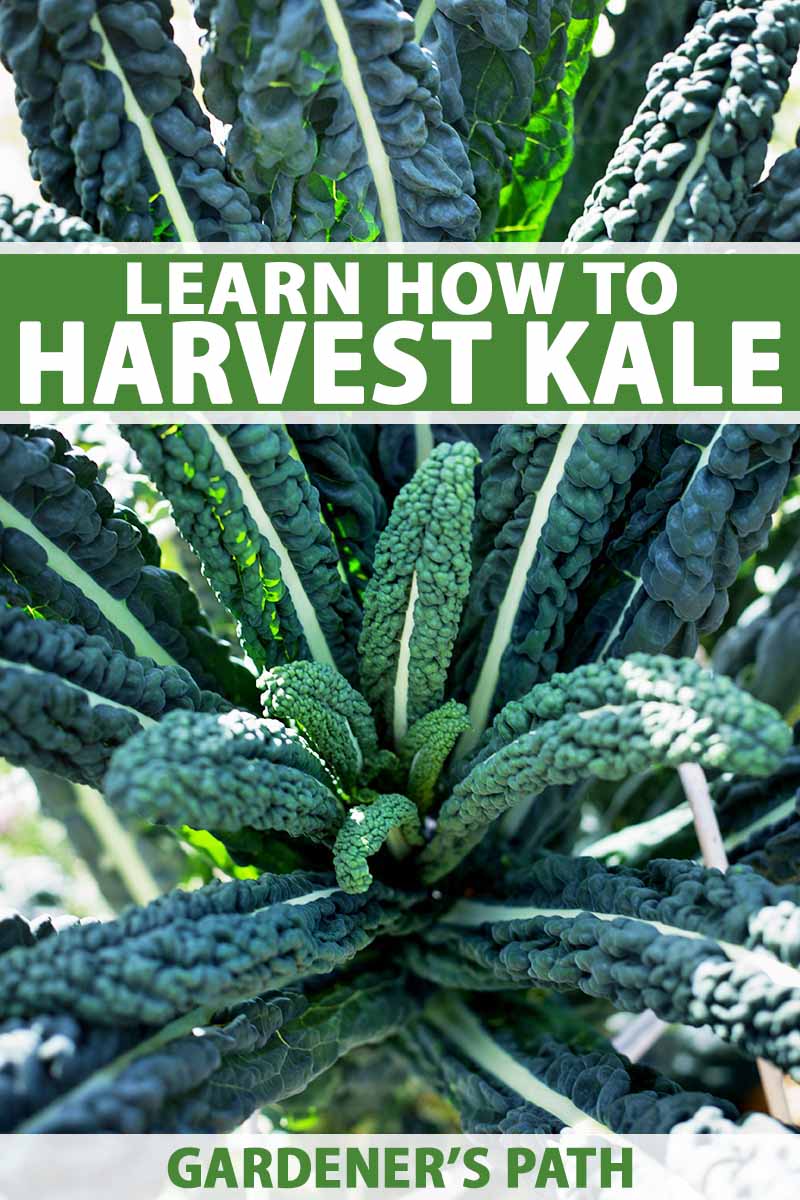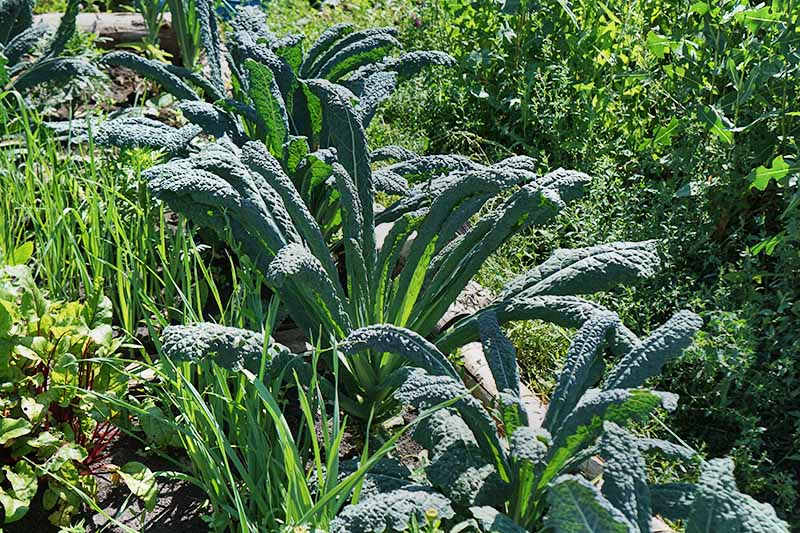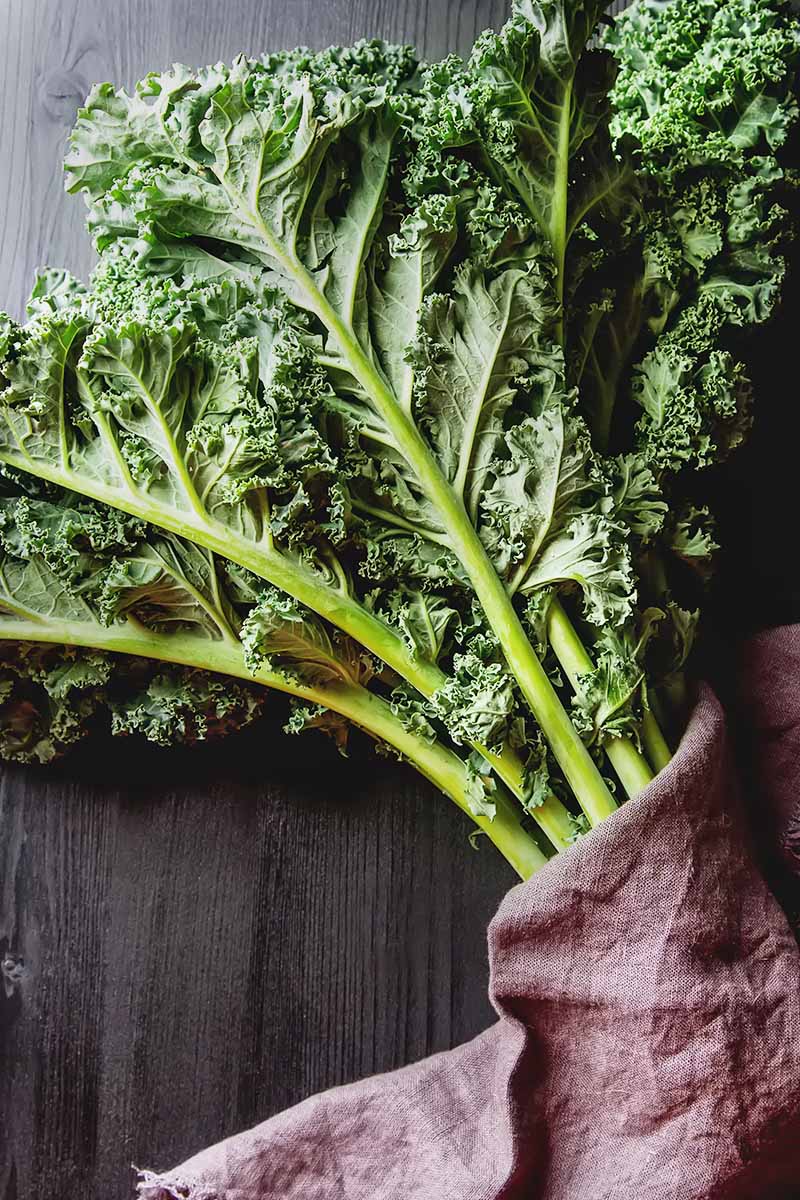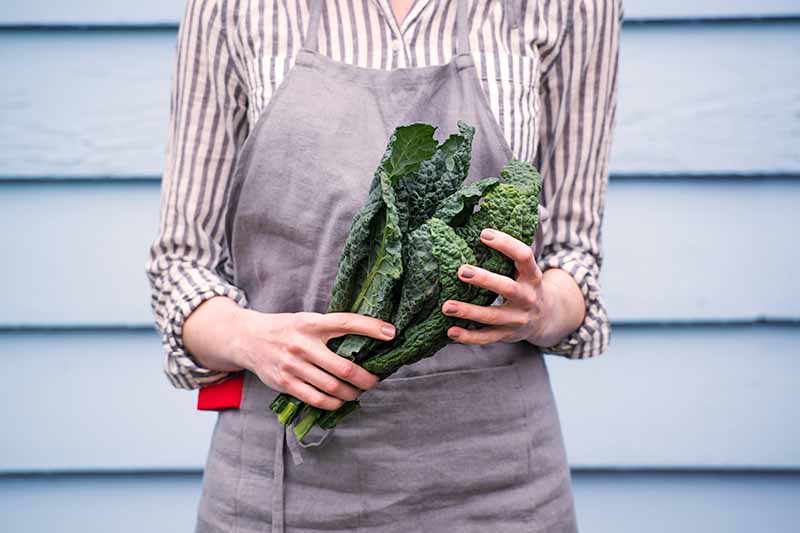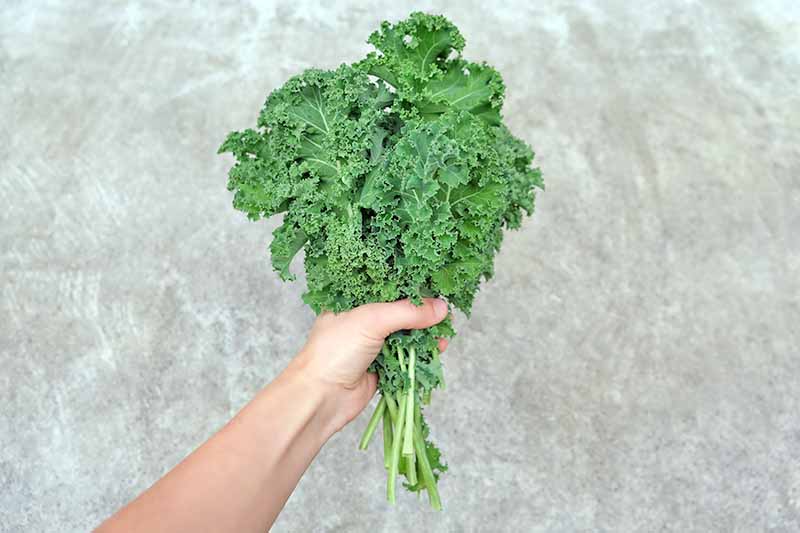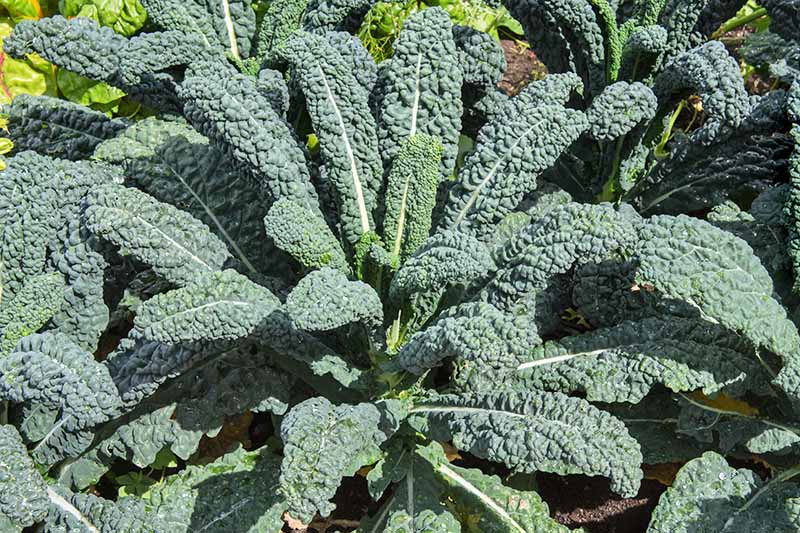We link to vendors to help you find relevant products. If you buy from one of our links, we may earn a commission. Kale is an easy vegetable to grow and harvest. However, you still have to know the right time and method to harvest. The timing and methods you use depend on if you are growing plants for baby greens or mature leaves. Continue reading to learn how to get the most from this nutritious green.
When to Pick Kale
Kale is ready to pick approximately 60 days after seeds have been planted. At this point, healthy plants will have upwards of ten leaves, with small ones in the center and larger ones on the outside. It is worth noting there isn’t a perfect time to pick this green. If you like smaller leaves, collect them earlier when they are younger. And if you prefer larger kale, wait until it sizes up. If you’re looking to grow baby kale, plants will be ready to pick and enjoy in 25 to 30 days after they are sown. The harvest period usually occurs once in late spring or early summer, and again in autumn. If you wait too long, however, older leaves may become discolored and eventually fall off the plant. If this happens, just remove and discard any leaves that have gone bad and continue harvesting.
After the first harvest, you can come back for more when the leaves have grown to about the size of an adult hand. Depending on your growing zone and the time of year, you can gather new greens every one to two weeks.
How to Harvest Mature Kale
All varieties of this vegetable are harvested in the same way. For mature plants, grasp the stem of a mature outer leaf at the base of the main stalk and pull down and out, away from the center, until it breaks. Repeat this process to pick all the greens you want.
Make sure to leave at least five central leaves on the plant so it can continue to photosynthesize and produce new growth. Never pick the innermost portion with the smallest leaves, as that’s where new growth originates. If your soil is soft or your plants are newly established, you can use a knife or scissors instead of your hands. This prevents you from pulling the whole plant out of the ground or snapping the main stalk.
If you see discolored or heavily insect-eaten leaves, make sure to remove these and discard them, or add them to the compost pile. This allows the plant to put its energy into new and healthy growth. It’s also a good time to check for slugs, aphids, and other damaging pests.
How to Harvest Baby Kale
If you’re growing baby greens for salads, they will be ready in 25-30 days. The Red Russian variety is often grown for these small leaves.
Remove by using your fingers to pinch off individual leaves at the base of the stem. If you prefer, you can cut the stems with scissors or a knife. My preferred method is to grab a handful and cut them off one to two inches above the ground, using a knife. This is a quick process that allows the plant to continue growing for future harvests.
When choosing where to cut, consider the growth point. On a kale plant, this is the central portion of the plant where stems converge and new growth emerges. To allow new growth, cut the stems above the growth point. To do this, cut just below where the stem connects to the larger leaves. This will leave the smaller ones intact so the plant can continue growing.
If you’re looking for ideas on how to use your harvest in the kitchen, consider making a butternut squash and kale pasta salad, from our sister site, Foodal, or a kale salad with garlic, lemon, and pecorino, also on Foodal. If you have any questions, please let us know in the comments. And make sure to check out the following articles for more information:
Harvest Hearty Greens From the Garden: How to Grow Kale How to Keep Kale from Wilting in the Garden What Causes Yellowing and Thinning of Kale Leaves? How to Harvest and Store Kale Seeds
© Ask the Experts, LLC. ALL RIGHTS RESERVED. See our TOS for more details. Uncredited photos: Shutterstock.
